|
Konica (Konishiroku)...the original Japanese photographic company, and the first of only two full-line manufacturers (meaning both equipment and consumables such as film, paper, and chemicals), with Fujifilm being the second. Often overlooked among the Japanese 35mm SLR manufacturers due to its small slice of market share, and running a distant third to Kodak and Fujifilm when it came to consumables sales during the last four decades of the film era, Konica nevertheless was very influential in both sectors well into the 1980s. They also played a large role in the enforcement of the JCII standards for all Japanese optical equipment sold for export from the mid-1950s - '90s, supplying the optical testing lenses used in the assessment process for all of the other manufacturers (many of which, ironically, went on to have more notoriety in the photographic community than Konica's own underrated Auto Reflex or AR Hexanon lens lineup). Konica had a reputation for innovation: they were part of the Japanese consortiums that developed the first metal-blade, vertical-travel focal plane shutters and improved rare-earth optical glasses in the early-'60s; then they introduced the first Japanese autoexposure SLR (the shutter-priority Auto-Reflex) in 1965, and subsequently added through-the-lens (TTL) metering to that in 1968 (the Autoreflex T). Fast forward to 1979, and the FS-1 would prove to be the progenitor of the final generation of Konica's AR-mount 35mm SLRs, while introducing more industry-firsts. But the seeds of Konica's SLR demise would unwittingly be sown simultaneously... Within a decade-and-a-half of the Auto-Reflex' debut, the SLR had gone from an all-metal, fully mechanical, manual exposure machine to a composite material, computer-controlled, autoexposure contraption that sat at the leading edge of camera development. The quest of the Japanese manufacturers to completely automate the operation of the SLR was still ongoing, however, and with the FS-1 Konica sought to automate a long-standing bugaboo for many SLR neophytes: film handling. Since the mid-'60s, various types of mechanical "easy"- or 'quick'-loading devices had been introduced to try and make loading 35mm roll film easier for SLR users. These worked with varying degrees of success, but all added complexity (and thus cost) to the design and production of such cameras. There had also been a tremendous rise in popularity of accessory motor drives and auto winders during the 1970s (it made neophyte Nick feel more like the professional photojournalist that his newly-bought SLR was surely going to transform him into ;-)). The FS-1 was going to be Konica's attempt to marry automated film loading with an internal motorized film-advance...and all wrapped up in their first electronically-controlled SLR. A bold move, to be sure. The SLR market had drastically changed from 1965 to the late'-70s. The cameras had gone from being the preserve of serious 35mm enthusiasts and professionals to the latest consumer craze, courtesy of the Canon AE-1 and its heel-nipping horde of imitators. The resulting cost pressures had already prompted Konica to take drastic measures with the latest of its Autoreflexes, the TC & T4. While they still retained a mechanical shutter, the TC & T4 had been the first Konica SLRs to adopt plastic for a significant portion of their exterior construction (the chassis was still all-metal). They also followed the trend of smaller, lighter bodies initiated by the Olympus OMs, with the net result of both design choices being a 30% reduction in weight over the last full-sized, full-featured Autoreflex, the T3N. The TC also saw the deletion of enthusiast-targeted features such as: depth-of-field (DOF) preview, multiple exposures, integrated eyepiece shutter, and mirror-lock-up (MLU) to further slash production costs. The lowest user-selectable shutter speed was now 1/8 sec., losing the 1/4, 1/2, and 1 sec. settings of the T3N along with the set shutter speed readout in the viewfinder. While the T4 retained the lower shutter speed settings, DOF preview, and multiple exposure capability, it did lose the T3N's MLU and the viewfinder shutter speed readout. Such measures would prefigure Konica's approach with the FS-1 in 1979. It was going to be a full-on, consumer-targeted SLR. While the TC and T4 retained at least some of their Autoreflex lineage, the FS-1 was to be Konica's first clean-sheet SLR design in nearly 15 years. And they were going all in on the electronic paradigm with their first electronically-controlled shutter to which they added: automatic electronic film loading, 1.5 frames per second (fps) internal motorized film winding, electronic self-timer, the second electronic remote release socket to grace an SLR with its presence (following the lead of the CONTAX RTS in 1975; and source of no small consternation to many a vintage SLR enthusiast ;-)), and their first electronic LED viewfinder display, all governed by what Konica claimed was the largest central processing unit (CPU) yet fitted to an SLR. To power all of this, Konica equipped the FS-1 with the first battery handgrip (holding 4 AAs/LR6s) to be seen on an SLR. This choice of power supply was going to play a major role in the life of the FS-1 (and Konica by extension) as we shall see ;-). With its prominent integral battery grip, the FS-1 looked like no motorized SLR before, but it certainly presaged the next two decades of SLR evolution to come. For the target audience there was no more fumbling with threading film leaders into take-up spools; just pull the leader to the rubber roller on the right side of the film chamber; make sure that a sprocket hole in the film was engaged with a sprocket tooth top and bottom; and close the back. The FS-1 would automatically advance to frame 1 and away they went. This basic film advance system design of the FS-1 would find its way in to all manner and brands of SLRs and Point & Shoots alike over the next 20+ years. Sadly, by 1987, Konica would absolve itself completely of SLR production due to a few factors, one of which could be traced to an unfortunate trait that lurked inside the FS-1. The Best of Times...the Worst of Times Konica had never been one of the major players in the SLR game, but had built a sterling reputation for reliability on the back of their rugged Autoreflexes, with even the de-contented TC and T4 still being solid cameras. Their metal shutters may have been loud, but they just never quit, and, aside from the somewhat-fragile meter of the T4, the rest of the basic mechanisms of the cameras were tried-and-tested. Such was the result of a decade of constant, albeit incremental, improvements. By the time the FS-1 came along, Konica had accrued a good deal of goodwill with its customer base: their cameras were solid...and their Hexanon lenses were a match for anyone's any day. But it was not all roses and sunshine for the small SLR maker. The Oil Crisis of 1973 had hit all of the Japanese SLR builders hard, but it was definitely worse for the smaller fish in the pond (like Konica), with several companies simply dropping out of the market. Even for the larger manufacturers, such as Canon, the Oil Crisis was no joke, and it was the driving force that pushed Canon into developing the AE-1 to try and recover financially by reducing production costs and finding new markets. That was the backdrop for Konica's decision to go all-electronic. The FS-1 would be a MAJOR leap for them technologically, but it came at a cost: all of their hard-earned experience with mechanical SLRs would now be of limited use with the replacement of almost every analogue system possible with an electronic version. And that relative inexperience, coupled with a desire to push the boundaries (e.g. automated internal film handling), would prove to exact a steep toll. The FS-1 debuted right in the middle of the biggest SLR sales extravaganza ever seen during the film era. And its timing could not have been better for consumers. It offered the simplest film loading procedure of any SLR to that point and had more than enough photographic capability for any newcomer (definitely on par with an AE-1). The styling was familiar enough, yet sleek and modern, perfect for its intended audience. And it sold like gangbusters...at first. But, like a mid-summer thunderstorm, trouble was soon brewing on the horizon. The FS-1 was the first camera, let alone SLR, to be powered by four 1.5V AA cells. Now, there were plenty of 6-volt SLRs to be had during the 1970s (the aforementioned A-series of Canons, Nikkormat ELs and Nikon EL2s, Pentax ES & ESIIs, to name a few). But these all used four small, separate button (LR44/SR44) or stacked (544/PX28) low-amperage cells. And those cells were only used to energize the exposure meters, viewfinder displays, and shutter electromagnets of such models (very low power demands compared to a motor drive or winder). If an accessory motor drive or winder was attached, it had its own, separate set of batteries and accompanying circuitry (at least four or more AAs or even larger cells). The FS-1 combined all of these previously-disparate functions within the body while using a common power supply that had a much larger amperage capacity than any previous electronic SLR:
Sad to say, the first production run of FS-1 circuits were not designed with sufficient safety margin in the case of undervoltage. [***NOTE*** Far be it for me to pretend that I am well-versed in electronics ;-). But it has been explained to me that the effect of allowing voltage (i.e. pressure of electrons) to drop under design specifications...can cause portions of the circuit to either energize simultaneously when not designed to, or fail to energize at all when needed to allow for the proper amperage (i.e volume of electrons) to flow through. Either scenario can lead to the overheating and subsequent failure of components, thus "frying" the circuitry. In the case of the FS-1, there was a much larger supply of amps available to "cook" components in a case of undervoltage versus other contemporary SLRs.] That Konica was plainly aware of this was demonstrated by a large sticker inside the battery cover that just said "NO!" to 1.2V NiCd rechargeables, in addition to the warnings in the owner's manual. They also deliberately rated battery life for the recommended alkaline cells very conservatively (15 rolls of 36 exp. at room temp., with a 5-roll emergency buffer to replace the batteries, which should have kept voltage above 1.2V per cell). Konica also stated directly in the owner's manual that the FS-1 would automatically shut down at the 20-roll limit, forcing the replacement of the batteries. That didn't stop Modern Photography from eking out 65 rolls in their lab testing (obviously the so-called "automatic shutdown" didn't occur, which didn't do Konica or the FS-1 any favors, as we will see :-o). By failing to account for standard consumer behaviour as Modern Photography did (trying to get as much out of a set of batteries as they could ;-)), even the earnest recommendation of alkaline AAs and changing them early couldn't prevent catastrophe for Konica. While nominally rated at 1.5V when new, alkaline cells immediately begin to drop in discharge voltage when in use, reaching 1.4V in a very short time, and descending steadily and linearly from there. Most discharge curve graphs track the drop down to 0.8V. But we know already that even 1.2V per cell was getting sketchy for the FS-1, per Konica's ban on using NiCds (even with their much flatter and stable voltage discharge profile). By the time a set of alkaline AAs had reached even a third of their total discharge cycle (remarkably coinciding with that 15 - 20 roll mark ;-)), you were already flirting with that undervoltage danger zone. Konica also recommended in the manual that the user refrain from continuous shooting once the low-battery warning appeared in the viewfinder (at approximately the 15-roll mark; continuous shooting obviously would compound the undervoltage issue). When pressed beyond either of Konica's stated limitations consistently, the outcome of a cooked FS-1 grew well beyond the standard failure rates for electronic SLRs. Konica produced nearly 250,000 copies before making the first alterations to the circuitry with the second production run (roughly 75 - 80,000 copies), and modifying the camera yet again for its final production run of around 180,000 units. Reliability improved with each reworking, but it was too little, too late. In near lockstep with the SLR sales bust that really started taking hold in 1981-82 went Konica's reputation for reliability. When they introduced the much-improved FT-1 in 1983, industry sales were already dropping as a result of the SLR bust, with Konica's blunder with the FS-1 only exacerbating their predicament. The AF revolution of 1985 would be the final nail in the coffin for Konica's once-proud manual focus SLR program. By 1988, they had had enough, and pulled the plug. The FS-1 Today Unfortunately for Konica, the original FS-1 was too far ahead of its time; or rather, too far ahead of battery technology's time. A decade after the discontinuation of the FS-1, Eveready (now Energizer) introduced its L91 Ultimate Lithium AA battery that was a perfect fit for high-current, autowinding SLRs such as the FS-1. Sporting a similarly-shaped voltage discharge curve to rechargeable NiCd or NiMH AA cells, the L91 maintains a voltage above 1.3V (the actual range is from 1.6V - 1.3V) for its entire lifespan (the curve basically plunges straight down once it reaches 1.3). While not a guarantee against the failure of an FS-1's circuitry, it gives the camera its best chance, by far. L91s last five times longer than alkalines at room temperature, and this balloons to fourteen times longer at -10 Celsius). There is also no leakage (with subsequent corrosion of delicate electrical bits) to worry about, another major drawback (and one that seems to be getting worse instead of better, in my experience) with alkalines. The FS-1 can be a great way to access the excellent AR Hexanon lens lineup for someone unafraid of electronic SLRs and that doesn't mind shelling out $10 or $12 for a set of Ultimate Lithiums ;-). The bog-standard 40/1.8 & 50/1.7 Hexanons have accrued an excellent reputation, and can still be had for $50 USD or less with regularity. No, it is not a full-featured, enthusiast-level SLR (like, say a T3N), but it:
And here is a little secret: when looking at the images produced, no one will know the difference ;-). That doesn't mean that you have to get your hands on an FS-1, or else your photographic journey will be somehow incomplete. But if a working example happens to cross your path, don't be afraid to give it a try, especially if you can swing the Lithium AAs or strictly adhere to Konica's original 15 rolls of 36 exp. per set of fresh alkalines rule, along with removing such batteries when the camera will not be used for an extended (longer than a couple of weeks) period of time. While, in terms of probability, you should be best served by getting a third-run body (S/N 420000+), followed by a second-run unit (S/N 345000-420000), first-run bodies (100000-345000) can still be found that are completely operational, over forty years later. Wrap-Up For their first attempt at an electronic SLR, Konica almost pulled it off: produce the right camera...at the right time...at the right price. Nevertheless, it only took that small misstep of failing to design sufficient undervoltage protection into the original FS-1's circuits to jeopardize their reputation and deal their SLR program a serious blow. It would be an oversimplification to pin all of the blame for Konica's eventual SLR exit on the FS-1 debacle, but it cannot be ignored for making a substantial contribution to it. The upshot, for someone looking a bit off the beaten Big 5 vintage SLR path today, is that you can often snag one for a bargain price. The usual caveats of checking the battery compartment for corrosion and making sure the camera is fully functional before buying obviously apply...and it's an autowinding SLR from the 1980s. READ: it is not quiet. It may be a hair under Nikon N2000 sound levels, but a Leica M3, it is not ;-). If you can live with that, then chuck in a set of Lithium AAs and have at it :-). References: The Konica AR System @ www.konicafiles.com Konica FS-1 User Manual @ https://www.butkus.org/chinon Modern Photography June 1979 Popular Photography Sept. 1983 Various Energizer and Duracell Technical Datasheets
8 Comments
8/18/2022 11:24:41 pm
Man, I love your blog posts! I learn so much about cameras that I often don't know anything about!
Reply
C.J. Odenbach
8/19/2022 09:58:24 am
Thanks for the comment and glad to hear you are enjoying the blog, Shawn.
Reply
8/25/2022 02:22:57 pm
Oh, I hear you on the EF3! They definitely are the nicest looking of the bunch, and having multiple colors doesn't hurt either. But I've never seen one in good shape at a price I'm willing to pay. Maybe if I get more money sometime...
Gil Aegerter
11/7/2022 07:28:57 pm
A second on your blog posts. I've learned so much from them. Thanks!
Reply
C.J. Odenbach
11/7/2022 09:30:28 pm
I always appreciate your comments, Gil. I enjoy making the journey through SLR history with others. I had no idea about the FS-1 and its fascinating saga until one dropped in my lap this past summer. Down the rabbit hole I fell again ;-). Thanks for coming along. Best regards.
C.J. Odenbach
8/25/2022 03:23:49 pm
Sounds like a plan. Enjoy the XA :-).
Reply
Melvin Bramley
10/23/2022 05:20:11 pm
Successful camera manufacturers succeed because of large advertising budgets rather than innovation.
Reply
C.J. Odenbach
10/24/2022 06:51:14 am
Marketing definitely tips the scales, Melvin. A competent product backed with better marketing will almost always come out ahead in the sales game than a more innovative or even superior one with mediocre marketing. And the 35mm SLR market was the toughest as far as competition went. Not to be underestimated was the influence of Ehrenreich Photo-Optical Industries (EPOI), the US distributor (and primary marketer) for Fuji, Mamiya, and Nikon (among others) from their introduction to the US market until at least the late-'70s, or early-'80s in the case of Nikon. EPOI held Nikon as their crown jewel in that lineup and marketed accordingly. Mamiya was maketed more aggressively in the medium format market and kept from encroaching too much into Nikon's favored professional/enthusiast 35mm SLR slot by EPOI. Very rarely, if ever, are products successful based on their merits, alone. Marketing ensures that ;-). Thanks for commenting and best regards.
Reply
Your comment will be posted after it is approved.
Leave a Reply. |
C.J. OdenbachSuffers from a quarter-century and counting film and manual focus SLR addiction. Has recently expanded into 1980's AF point and shoots, and (gack!) '90s SLRs. He even mixes in some digital. Definitely a sick man. Categories
All
Archives
June 2024
|
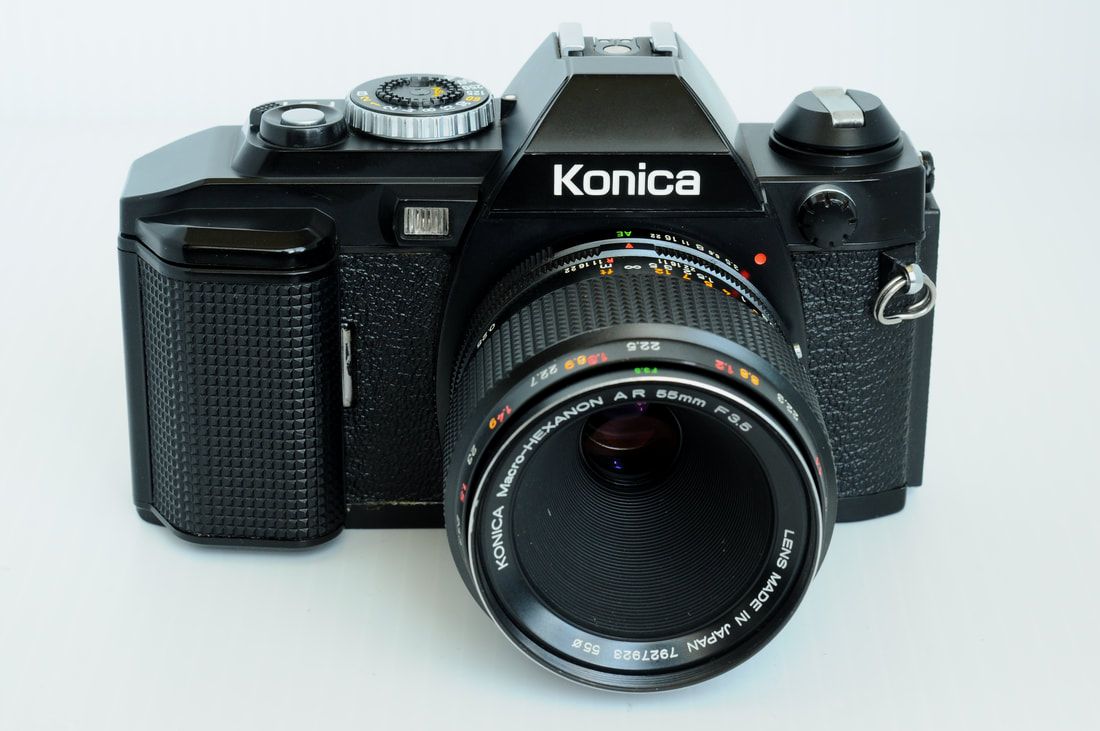
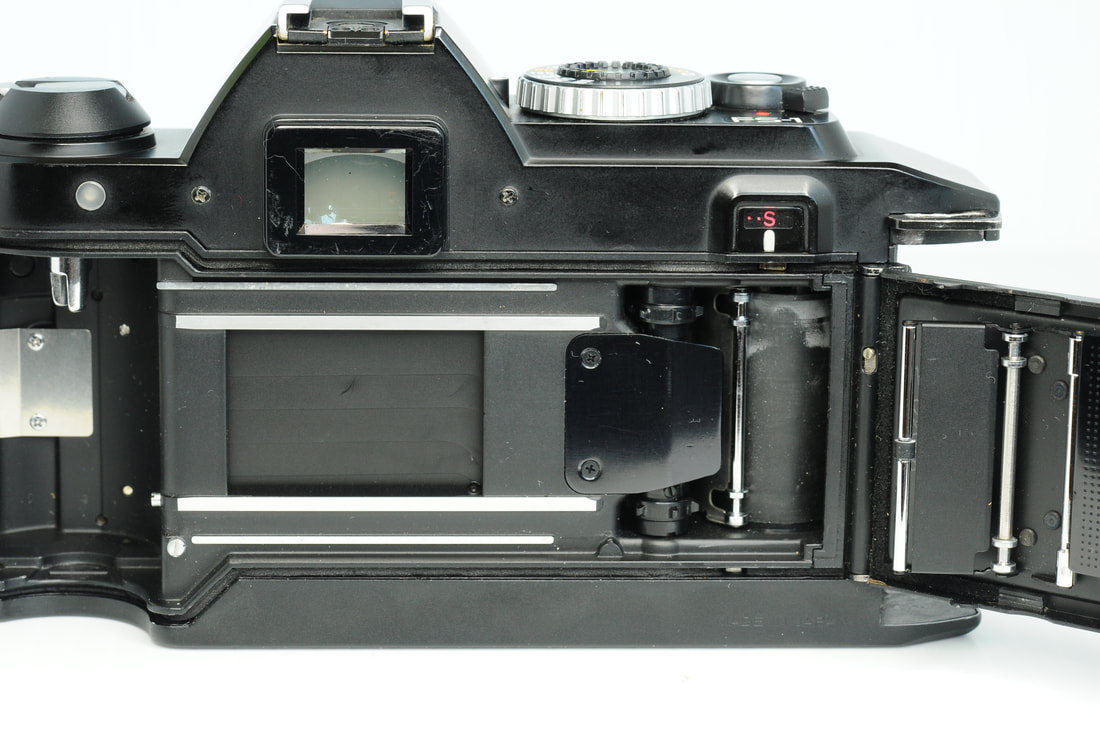
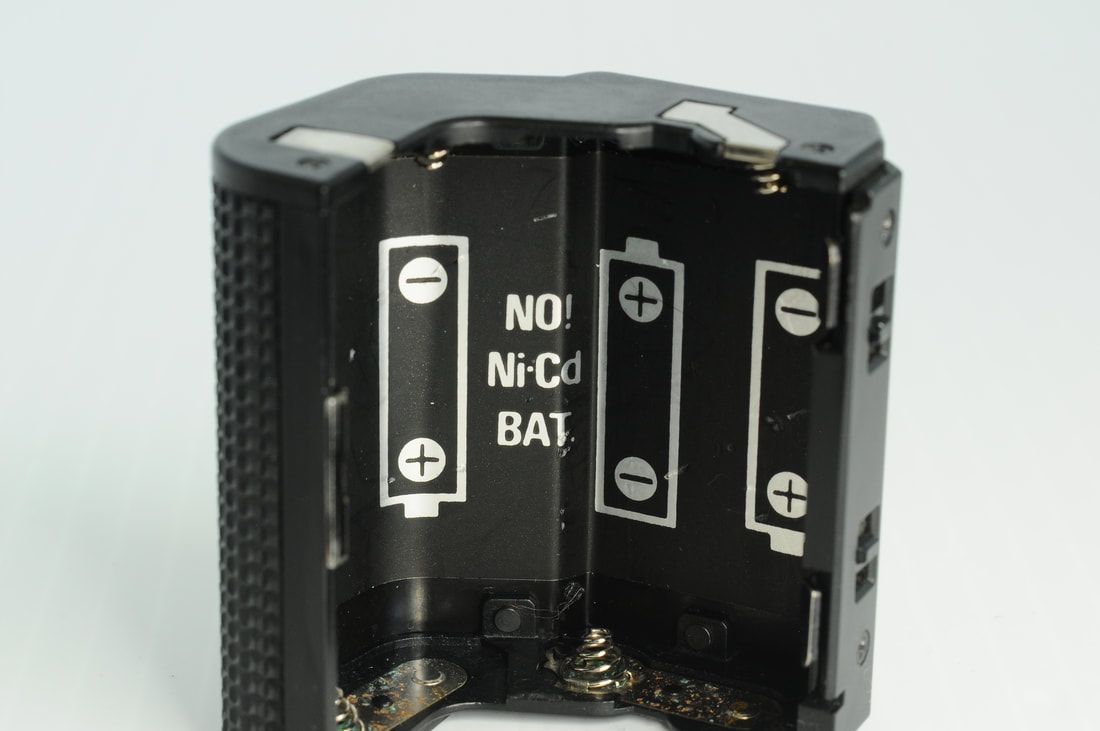
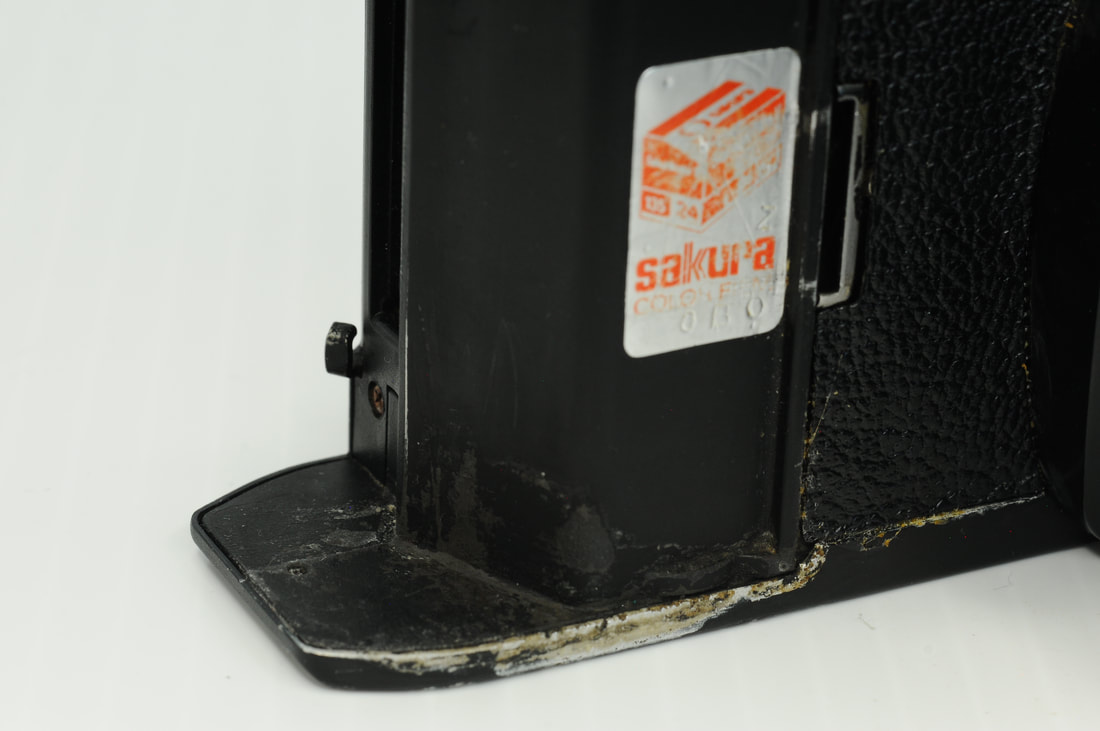
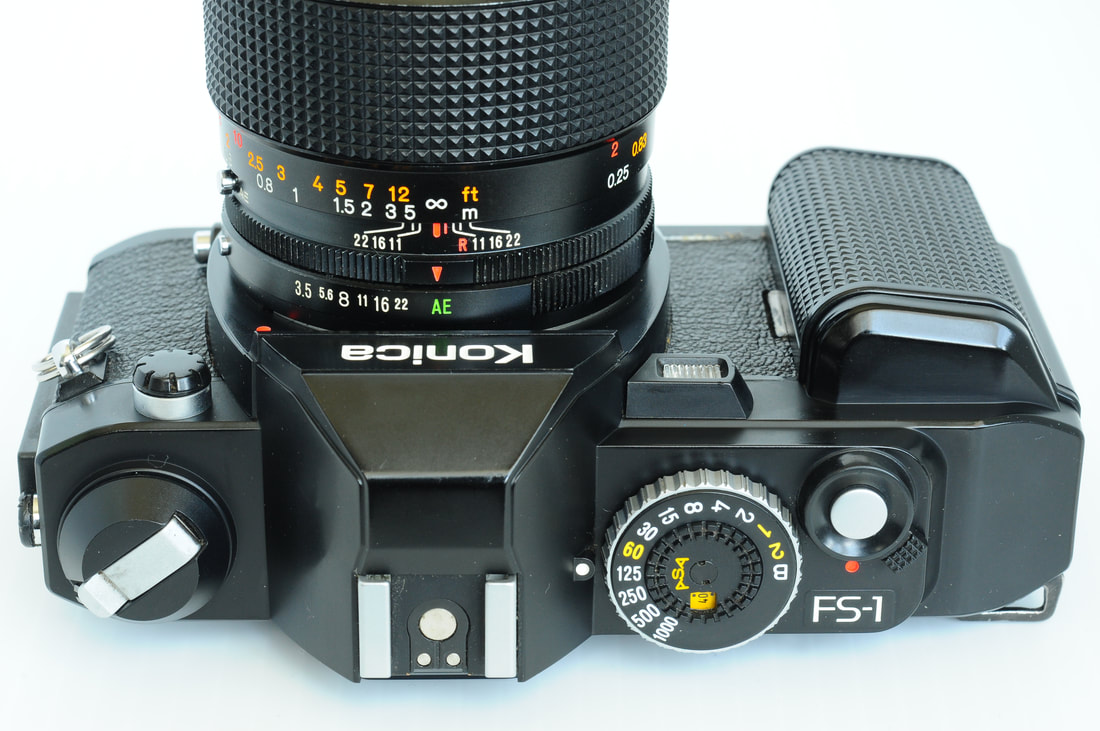
 RSS Feed
RSS Feed